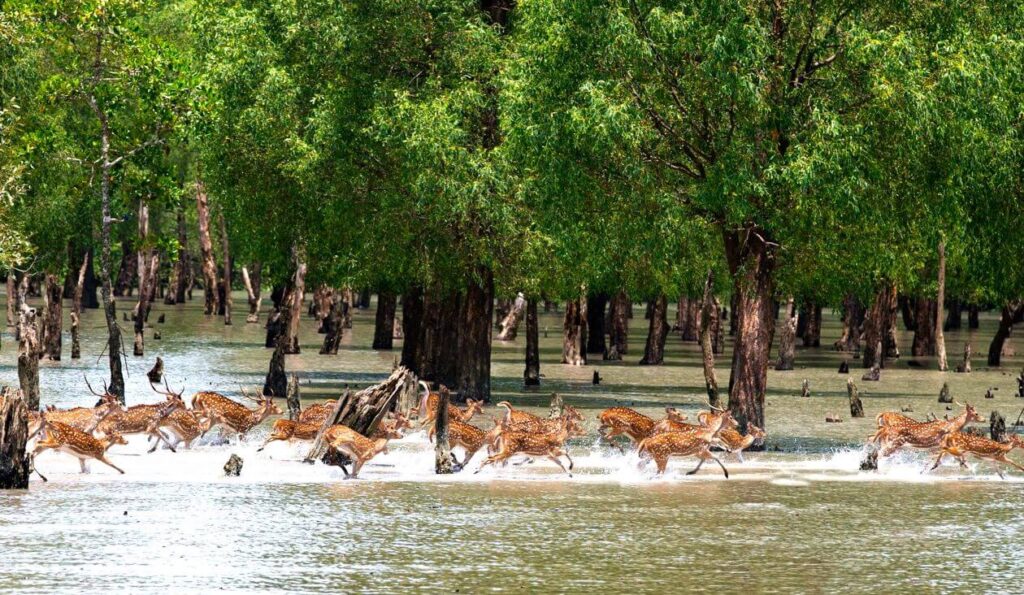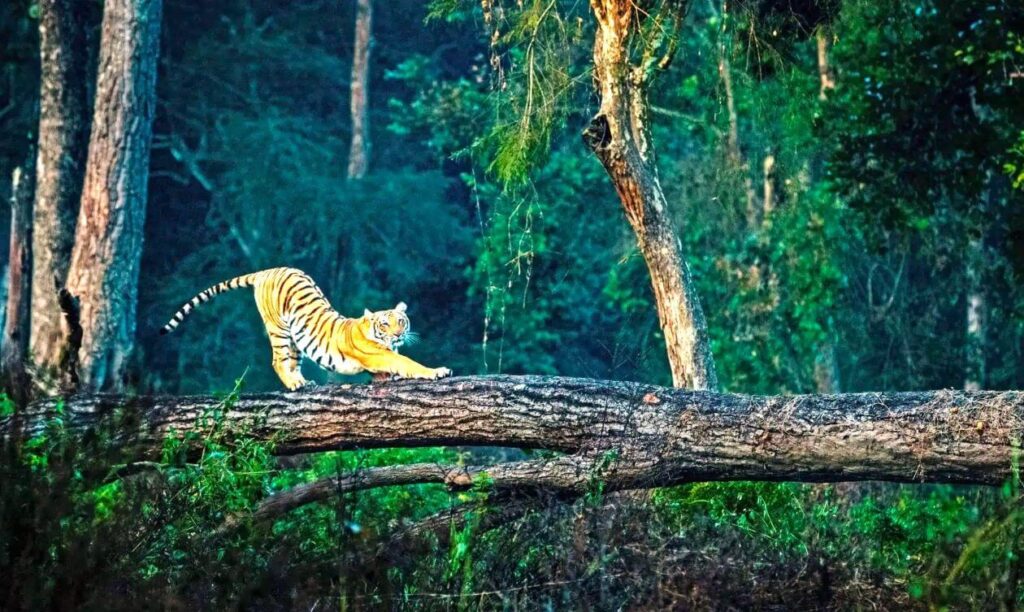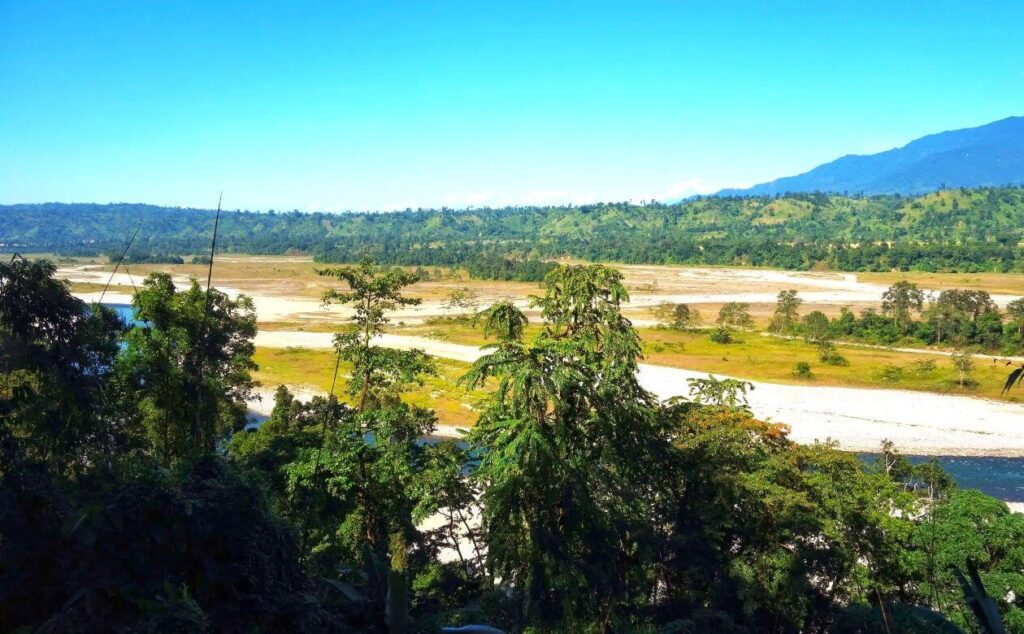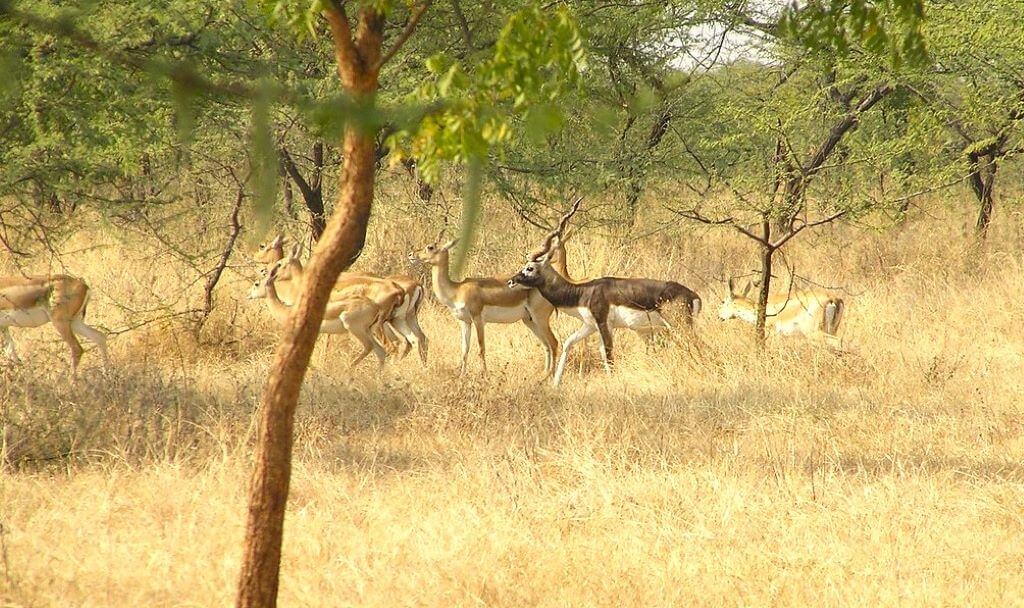India is blessed with some of the most stunning forests in the world, offering a perfect blend of breathtaking landscapes, rich biodiversity, and extraordinary wildlife experiences. From tiger reserves and mangrove ecosystems to tropical rainforests and lion habitats, these forests not only provide shelter to countless species but also stand as symbols of India’s natural heritage and conservation efforts.
Top 5 Forests to Visit in India
If you are a nature lover, birdwatcher, or wildlife enthusiast, exploring these forests will be an unforgettable journey. Let’s dive into the 5 most beautiful forests in India that every traveler must visit.
Kanha National Park – A Jewel of Indian Forests

Located in the Mandla and Balaghat districts of Madhya Pradesh, Kanha National Park is one of the largest and most spectacular forests in India. Known for its sal and bamboo forests, open meadows, and crystal-clear streams, the park is a paradise for wildlife lovers.
It is home to diverse wildlife, including Bengal tigers, Indian leopards, barasingha, gaur, dhole, sloth bear, and jackals, along with nearly 300 species of birds. Recognized as a major tiger reserve, Kanha is also famous for its role in inspiring Rudyard Kipling’s classic The Jungle Book.
Best Time to Visit: October to June
Sundarbans Mangrove Forest – The World’s Largest Mangrove Ecosystem

Spread across the Ganges Delta in West Bengal, the Sundarbans Mangrove Forest is the largest mangrove forest in the world and a UNESCO World Heritage Site. Formed by the confluence of the Ganges, Brahmaputra, and Meghna rivers, this forest is a natural wonder of India.
Its dense canopy is dominated by sundri and gewa trees and shelters an extraordinary range of species—over 453 species of fauna, including 290 birds and 120 fish species. The Sundarbans is also the most famous Bengal tiger habitat, along with other rare and threatened wildlife.
Beyond biodiversity, the forest plays a crucial role in natural disaster resilience, protecting coastal areas from cyclones and tidal surges.
Best Time to Visit: November to February
Jim Corbett National Park – India’s First National Park

Nestled in the Himalayan foothills of Uttarakhand, Jim Corbett National Park holds the honor of being India’s first national park. It is one of the most visited wildlife destinations in the country, known for its diverse landscapes of hills, meadows, rivers, and lakes.
The forest is covered with dense sal, peepal, and mango trees, supporting more than 617 species of plants and animals. The park is home to Bengal tigers, leopards, Asian elephants, sloth bears, and countless bird species, making it a paradise for wildlife photographers and safari enthusiasts.
As one of India’s most famous tiger reserves, Jim Corbett offers thrilling jeep safaris where visitors can witness the wild in its purest form.
Best Time to Visit: November to June
Namdapha National Park – A Biodiversity Hotspot of Northeast India

Situated in Arunachal Pradesh, Namdapha National Park is the fourth largest national park in India and a true wilderness destination. Its untouched tropical rainforests and incredible diversity—nearly 1,000 floral species and 1,400 fauna species—make it one of the richest ecosystems in Asia.
Namdapha is unique as the only protected area in the world where all four big cats—tiger, leopard, snow leopard, and clouded leopard—coexist. Other species found here include the Asiatic black bear, Malayan sun bear, dhole, and red panda, making it a haven for wildlife enthusiasts.
Declared an eco-sensitive zone, Namdapha is both a botanical wonderland and a crucial conservation hub of Northeast India.
Best Time to Visit: October to March
Gir Forest National Park – The Last Abode of the Asiatic Lion

Located in the Junagadh district of Gujarat, Gir Forest National Park is world-famous as the last natural habitat of the Asiatic lion. Characterized by dry deciduous forests, grasslands, and rocky hills, the park supports a rich variety of flora and fauna.
In addition to the Asiatic lion, Gir is home to the Indian leopard, striped hyena, jungle cat, golden jackal, and numerous bird species. Originally a wildlife sanctuary, it later became a national park and biosphere reserve, reflecting its global ecological importance.
Gir not only showcases India’s successful lion conservation efforts but also holds deep cultural significance for local communities, making it one of the most iconic forests in India.
Best Time to Visit: December to March
Conclusion
India’s forests are not just breathtaking landscapes—they are living ecosystems that shelter rare species, conserve biodiversity, and protect communities from natural disasters. From the tiger-rich jungles of Kanha and Corbett to the mangroves of Sundarbans, the rainforests of Namdapha, and the lion haven of Gir, each forest tells its own unique story of wildlife and wonder.
For travelers seeking adventure, wildlife safaris, or simply a connection with nature, these 5 stunning forests in India promise unforgettable experiences.
FAQs About Forests in India
Jim Corbett National Park in Uttarakhand is one of the most famous forests in India, known as the country’s first national park and a popular tiger reserve.
The Asiatic lion can only be found in Gir Forest National Park in Gujarat, the last natural habitat of this species.
The Sundarbans in West Bengal is the largest mangrove forest in the world and a UNESCO World Heritage Site, famous for being home to the Bengal tiger and offering natural protection against cyclones.
Namdapha National Park in Arunachal Pradesh is among the richest biodiversity hotspots in India, hosting nearly 1,000 plant species and 1,400 animal species, including all four big cats.
Most Indian forests and national parks are best visited between October and June, when the weather is pleasant and the chances of spotting wildlife are higher.
The Sundarbans Mangrove Forest is the largest forest in India and the world’s largest mangrove ecosystem, spanning across West Bengal and Bangladesh.







